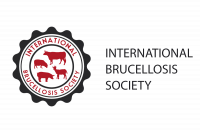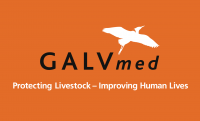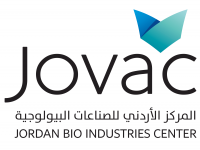Day 0 – Thursday, 15 September 2022
| 17.00 | Welcome Reception and participants’ registration |
| 18.30 | Welcome Cocktail |
| 20.30 | End of the day |
Day 1 – Friday, 16 September 2022
| 08:00 | Registration | |
| 09:00 | Opening Ceremony | Nicola D’Alterio Director General, Istituto Zooprofilattico Sperimentale dell’Abruzzo e del Molise, Teramo, Italy Jwan Costantini Major of Giulianova, Teramo, Italy Marco Marsilio President of the Abruzzo Region, Italy Pierdavide Lecchini Director General, Animal health and veterinary drugs, CVO, Ministry of health, Rome, Italy Simona Forcella Policy Officer, European Commission – Directorate-General For Health And Food Safety – Unit G2 – Animal Health, Brussels, Belgium Frank Boelaert (vdc) Senior scientific officer, Biological Hazards & Animal Health and Welfare unit (BIOHAW), European Food Safety Authority (EFSA), Parma , Italy Keith Sumption Chief Veterinary Officer/ Leader Animal Health Programme (NSAH) Chief, Joint Zoonotic Diseases and AMR Centre (CJWZ), Food and Agriculture Organization of the United Nations (FAO), Rome. Italy Romano Marabelli Advisor to the Director General, World Organization for Animal Health (WOAH), Paris, France Fabrizio De Massis (conference chair) WOAH and National Reference Laboratory for Brucellosis Istituto Zooprofilattico Sperimentale dell’Abruzzo e del Molise, Teramo, Italy |
| 11:00 | Coffee Break |
Session 1: Taxonomy, Evolution, Emerging Species
Chair: Adrian Whatmore
Animal and Plant Health Agency, Addlestone, Surrey, UK.
| 11:30 | Keynote Lecture:
The ever expanding Brucella genus |
David O’Callaghan VBIC, INSERM U1047, University of Montpellier, National Reference Center for Brucella, Microbiology laboratory, Nimes, France |
| 12:00 | The global spread of the most famous Brucella species | Jeffrey Foster Pathogen and Microbiome Institute, Northern Arizona University, Flagstaff, USA |
| 12:15 | East African Brucella phylogenomics: introducing OrthoPhylo, A turn‐key tool for generating ortholog based bacterial whole genome phylogenetic trees | Earl Middlebrook Los Alamos National Labs, Los Alamos, US |
| 12:30 | Canine Brucellosis in France due to Brucella canis: an emerging disease? | Guillaume Girault EU, WOAH & National Reference Laboratory for Animal Brucellosis, Animal Health Laboratory, Paris-Est University/ANSES, Maisons-Alfort, France |
| 12:45 | Evolution towards pathogenicity: phylogenomic insights into Brucellaceae | Maite Loperena-Barber Institute of Tropical Health (ISTUN), University of Navarra, Spain |
| 13:00 | Brucellosis on the Guiana Shield: emergence of a new Brucella species? | Anne Keriel University of Montpellier, INSERM / Hospital Center of Nîmes, France |
| 13:15 | Atypical Brucella spp. are facultatively anaerobic in the presence of nitrates, correlating with increased expression of denitrification genes under anoxic conditions | Stephan Köhler Infectious Diseases Research Institute (IRIM), CNRS – University of Montpellier, France |
| 13:30 | Lunch break/Poster session (Session 1) |
Session 2: Genomics and Proteomics
Chair: Giuliano Garofolo
Istituto Zooprofilattico Sperimentale dell’Abruzzo e del Molise “G. Caporale”, Teramo, Italy.
| 15:30 | Keynote Lecture: Next-generation proteomics in the fight against pathogens: a guide tour |
Jean Armengaud National Institute of Agronomic Research (INRA), Bagnols sur Cèze, France |
| 16:00 | Brucella Databases at BioCyc.org: Pathways, Omics Tools, and Enhanced Genome Annotation | Ron Caspi Bioinformatics Research Group, SRI International, Menlo Park, California, USA |
| 16:15 | Histidine metabolism and metal homeostasis in Brucella abortus | Charline Focant Research Unit in Microorganisms Biology (URBM), University of Namur, Belgium |
| 16:30 | Metabolic Glycoengineering: A strategy to label Brucella abortus cell envelope with synthetic analogues of D-mannose | Angeline Reboul Research Unit in Microorganisms Biology (URBM), University of Namur, Belgium |
| 16:45 | Targeted methodology for the identification of protein‐peptide vaccine candidates | Louisa B. Tabatabai (vdc) Department of Biochemistry, Biophysics and Molecular Biology, Iowa State University, Ames Iowa, USA |
| 17:00 | Whole genome based tools in epidemiological surveillance of Brucella abortus, Brucella melitensis and Brucella suis bv2 in Italy in the last decade | Anna Janowicz WOAH and National Reference Laboratory for Brucellosis, Istituto Zooprofilattico Sperimentale dell’Abruzzo e del Molise, Teramo, Italy |
| 17:15 | In silico pipeline for protein comparisons in Brucella genus | Vitomir Djokic EU, WOAH & National Reference Laboratory for Animal Brucellosis, Animal Health Laboratory, Paris-Est University/ANSES, Maisons-Alfort, France |
| 17:30 | Coffee Break/Poster Session (Session 2) | |
| 19:00 | End of the first day |
Day 2 – Saturday, 17 September 2022
Session 3: Pathogenesis and Host-Pathogen-Interaction
Chair: Marty Roop
Brody School of Medicine, East Carolina University, Greenville, North Carolina, USA.
| 09:00 | Keynote Lecture: Metabolic interaction between Brucella abortus and its host |
Renée Tsolis University of California, Davis, California, USA |
| 09:30 | BNIP3L‐dependent mitophagy induced by Brucella abortus in host cells is required for bacterial egress | Jeremy Verbeke Research Unit in Cell Biology – Namur Research Institute for Life Sciences (NARILIS), University of Namur, Belgium |
| 09:45 | RNA‐immunoprecipitation/miRNA‐Seq reveals miRNA‐like, small noncoding RNAs of Brucella suis, translocated into the cytoplasm of infected murine macrophages | Stephan Köhler Infectious Diseases Research Institute (IRIM), CNRS-University of Montpellier, France |
| 10:00 | Lipopolysaccharide synthesis and traffic in the envelope of the pathogen Brucella abortus | Caroline Servais Research Unit in Microorganisms Biology (URBM), University of Namur, Belgium |
| 10:15 | A Brucella effector that modulates host retrograde transport to promote intravacuolar replication | Jean Celli Paul G. Allen School for Global Animal Health, Washington State University, Pullman, Washington, USA |
| 10:30 | Novel H-NS-like Protein MucR Coordinates Virulence Gene Expression During Host- Association in Brucella spp. Through Silencer/ Counter-Silencer Interactions | Ian S. Barton Department of Microbiology and Immunology, Brody School of Medicine, East Carolina University, Greenville, North Carolina, USA |
| 10:45 | Structural insights into the NyxA/B effector family | Laurent Terradot Laboratory of Molecular Microbiology and Structural Biochemistry, Centre National de la Recherche Scientifique, Université de Lyon, France |
| 11:00 | Coffee Break |
Session 4: Immunology
Chair: Paolo Pasquali
Istituto Superiore di Sanità, Roma, Italy.
| 11:30 | Keynote Lecture: Internal affairs: defining how cytosolic receptors sense Brucella and contributes to host defense |
Sergio Costa Oliveira Federal University of Minas Gerais, Belo Horizonte, Brazil |
| 12:00 | Antibody response elicited by Brucella abortus strain RB51 vaccine in young water buffaloes (Bubalus bubalis) using a triple dose and the WOAH vaccination schedule. A long term trial | Flavio Sacchini WOAH and National Reference Laboratory for Brucellosis, Istituto Zooprofilattico Sperimentale dell’Abruzzo e del Molise, Teramo, Italy |
| 12:15 | Antibody response elicited by Brucella abortus strain RB51 vaccine in young water buffaloes (Bubalus bubalis) using a triple dose and the vaccination schedule authorised in Caserta province, Italy | Fabrizio De Massis WOAH and National Reference Laboratory for Brucellosis, Istituto Zooprofilattico Sperimentale dell’Abruzzo e del Molise, Teramo, Italy |
| 12:30 | Use of brucellin skin test to identify water buffaloes (Bubalus bubalis) vaccinated with the live attenuated vaccine B. abortus strain RB51 | Flavio Sacchini WOAH and National Reference Laboratory for Brucellosis, Istituto Zooprofilattico Sperimentale dell’Abruzzo e del Molise, Teramo, Italy |
| 12:45 | Effects of age on immune response induced by Brucella abortus s19 or RB51 vaccination in heifers | Elaine M. S. Dorneles Federal University of Lavras, Brazil |
| 13:00 | TIRAP exon 5 polymorphisms influence the outcome of B. melitensis infection in goats | Carlos Rossetti National Institute of Agricultural Technology (INTA), Buenos Aires, Argentina |
| 13:15 | PMNs supports Brucella dispersal with reduced immune recognition | Elías Barquero-Calvo Research Program in Tropical Diseases, School of Veterinary Medicine, National University, Heredia, Costa Rica |
| 13:30 | Coffee Break/Poster Session (Session 3-4) | |
| 14:30 | International Brucellosis Society Business Meeting |
Session 5: Vaccination
Chair: José Maria Blasco
Agrifood Institute of Aragón (IA2) CITA-University of Zaragoza, Zaragoza, Spain
| 15:30 | Keynote Lecture: The bumpy road to a Brucella vaccine: the near hits and good catches |
Angela Arenas-Gamboa Texas A&M University, College Station, Texas, USA |
| 16:00 | Registered Influenza Viral Vector Based Brucella abortus Vaccine for Cattle in Kazakhstan: Age‐Wise Safety and Efficacy Studies | Kaissar Tabynov Kazakh National Agrarian Research University (KazNARU), Almaty, Kazakhstan |
| 16:15 | Improving Rev1 vaccine safety in pregnant ewes | Pilar M. Muñoz Department of Animal Science, Center for Research and Agrifood Technology of Aragón-IA2, Zaragoza, Spain |
| 16:30 | Screening for vaccinal candidates in Brucella canis: A genomic based strategy for selection of potential DNA target regions | Ana M. Zúñiga‐Pereira CIET, Microbiology Faculty, University of San José, Costa Rica |
| 16:45 | BM Delta‐pgm, a superior vaccine for the control of brucellosis in small ruminants | Diego Comerci Biotechnological Research Institute, National University of San Martin (IIBUNSAM-CONICET), Buenos Aires, Argentina |
| 17:00 | Pathogenesis of Brucella ovis in pregnant mice and protection induced by the candidate vaccine strain B. ovis ΔabcBA | Renato de Lima Santos Department of Veterinary Clinic and Surgery, School of Veterinary Medicine, Federal University of Minas Gerais, Belo Horizonte, Brazil |
| 17:15 | Identification by Transposon-sequencing of essential genes for chronic infection by Brucella in mice | Emeline Barbieux Research Unit in Biology of Microorganisms (URBM), NARILIS, UNamur, Belgium, Laboratoire de Parasitologie, Université Libre de Bruxelles and ULB Center for Research in Immunology (U-CRI), Gosselies, Belgium |
| 17:30 | Brucella abortus RB51 Vaccine Strain and Raw Milk Consumption: An Emerging Public Health Risk | Rebekah Tiller NCEZID/DHCPP/BSPB Zoonoses and Select Agent Laboratory, Atlanta, Georgia, USA |
| 17:45 | Coffee Break/Poster Session (Session 5) | |
| 19:00 | End of the second day |
Day 3 – Sunday, 22 June 2023
Session 6: Diagnostics
Chair: Falk Melzer
Friedrich-Loeffler-Institute, Federal Research Institute for Animal Health, Jena, Germany.
| 09:00 | Keynote Lecture: The diagnosis of brucellosis |
John McGiven Brucellosis Reference Laboratory, Animal and Plant Health Agency (APHA), Bacteriology Department, Addlestone, United Kingdom |
| 09:30 | Investigation into efficacy of rLPS based serodiagnostic antigens | Laurence Howells Brucellosis Reference Laboratory, Animal and Plant Health Agency (APHA), Bacteriology Department, Addlestone, United Kingdom |
| 09:45 | Cross-reaction comparative evaluation of five enzyme-linked immunosorbent assay and Golden Standard methods for porcine Brucellosis diagnosis | Acacia Ferreira Vicente EU, WOAH & National Reference Laboratory for Animal Brucellosis, Animal Health Laboratory, Paris-Est University/ANSES, Maisons-Alfort, France |
| 10:00 | Machine Learning for MALDI‐TOF MS identification of Brucella | Teresa Romualdi WOAH and National Reference Laboratory for Brucellosis, Istituto Zooprofilattico Sperimentale dell’Abruzzo e del Molise, Teramo, Italy |
| 10:15 | Swab types and storage conditions affect Brucella recovery and DNA detection | Luca Freddi EU, WOAH & National Reference Laboratory for Animal Brucellosis, Animal Health Laboratory, Paris-Est University/ANSES, Maisons-Alfort, France |
| 10:30 | Proteomics-based identification of immunodominant Brucella canis proteins as candidates for serodiagnosis and vaccine development | Dirk Hofreuter Department of Biological Safety, German Federal Institute for Risk Assessment, Berlin, Germany |
| 10:45 | Preliminary study of interferon gamma test used for diagnosis of brucellosis in the water buffalo | Lorena Schiavo National Reference Centre for Hygiene and Technology of Breeding and Buffalo Production, Istituto Zooprofilattico Sperimentale del Mezzogiorno, Salerno, Italy |
| 11:00 | Coffee Break |
Session 7: Human Brucellosis
Chair: Ignacio Moriyón
Emeritus Professor, Institute for Tropical Health and Department of Microbiology, University of Navarra, Pamplona, Spain
| 11:30 | Keynote Lecture: Challenges in human brucellosis |
Nicholas J. Beeching Liverpool School of Tropical Medicine, Liverpool, UK |
| 12:00 | Brucellosis in a farming community in central South Africa: A longitudinal cohort study (2015-2018) | Jennifer Rossouw National Institute for Communicable Diseases, Johannesburg, South Africa |
| 12:15 | First analysis of antimicrobial resistance in Brucella strains isolated in Italy | Katiuscia Zilli WOAH and National Reference Laboratory for Brucellosis, Istituto Zooprofilattico Sperimentale dell’Abruzzo e del Molise, Teramo, Italy |
| 12:30 | Whole Genome Sequencing for Tracing Geographical Origin of Imported Cases of Human Brucellosis in Sweden | Tara Wahab Department of Microbiology, Public Health Agency of Sweden, Solna, Sweden |
| 12:45 | Screening of FDA approved Drugs to treat Brucellosis | Nammalwar Sriranganathan Biomedical Sciences and Pathobiology, Virginia Tech, Blacksburg, Virginia, USA |
| 13:00 | Human brucellosis exposure in confirmed cutaneous anthrax cases, Dien Bien, Vietnam with an update on human prevalence regionally | Jason Blackburn Spatial Epidemiology & Ecology Research Laboratory, Department of Geography, University of Florida, Gainesville, Florida, USA |
| 13:15 | Going chronic: about a complicated case of pediatric brucellosis being the first ‘endemic’ incident of human brucellosis in Belgium (2021-2022) | Marcella Mori National Reference Centre for Brucella spp., Sciensano (Brussels), Belgium |
| 13:30 | Lunch Break/Poster Session (Session 6-7) |
Session 8: Epidemiology, Control and Eradication
Chair: Paolo Calistri
Istituto Zooprofilattico Sperimentale dell’Abruzzo e del Molise “G. Caporale”, Teramo, Italy.
| 15:30 | Keynote Lecture: Control of Brucellosis in Domestic Ruminants. Yes we can! |
Bruno Garin-Bastuji French Agency for Food, Environmental and Occupational Health & Safety (ANSES), Maisons-Alfort, France |
| 16:00 | T-Racing: a contact tracing tool for supporting epidemiological investigation during livestock disease outbreaks | Luca Candeloro WOAH and National Reference Laboratory for Brucellosis, Istituto Zooprofilattico Sperimentale dell’Abruzzo e del Molise, Teramo, Italy |
| 16:15 | Follow up investigations on non-infected dogs adopted from the B. canis Italian outbreak | Fabrizio De Massis WOAH and National Reference Laboratory for Brucellosis, Istituto Zooprofilattico Sperimentale dell’Abruzzo e del Molise, Teramo, Italy |
| 16:30 | Risk factors for the persistence and spread of Brucellosis in buffaloes in the province of Caserta (2015‐2020) | Maria Ottaiano Istituto Zooprofilattico Sperimentale del Mezzogiorno, Portici, Italia |
| 16:45 | Outbreak of bovine brucellosis in the Bargy mountain: special feature of B. melitensis infection in cattle | Claire Ponsart EU, WOAH & National Reference Laboratory for Animal Brucellosis, Animal Health Laboratory, Paris-Est University/ANSES, Maisons-Alfort, France |
| 17:00 | Human brucellosis: First calculated estimate of global annual incidence | Christopher G. Laine Department of Veterinary Pathobiology, College of Veterinary Medicine & Biomedical Sciences, Texas A&M University, College Station, Texas, USA |
| 17:15 | Insights into the seroprevalence of Brucella canis infection in dogs in Portugal | Ana Cristina Ferreira National Institute of Agricultural and Veterinary Research (INIAV), Oeiras, Portugal |
| 17:30 | Coffee Break/Poster Session (Session 8) | |
| 19:30 | Gala Dinner Lectio Magistralis: “Brucellosis and OneHealth: inherited and future challenges” |
Ignacio Moriyón Professor, Institute for Tropical Health and Department of Microbiology, University of Navarra, Pamplona, Spain |
Day 4 – Monday, 19 September 2022
Session 9: Wildlife brucellosis
Chair: Jacques Godfroid
The Arctic University of Norway, Tromsø, Norway.
| 09:00 | Keynote Lecture: Brucellosis in wildlife and livestock |
Henriette van Heerden University of Pretoria, Onderstepoort, South Africa |
| 09:30 | Isolation of Brucella suis biovar 2 in a male roe deer (Capreolus capreolus), in central Italy | Marco Gobbi Istituto Zooprofilattico Sperimentale dell’Umbria e delle Marche, Perugia, Italy |
| 09:45 | Brucella ceti infection in cetaceans from Italian Seas: associated lesions and epidemiological data | Carla Grattarola C.Re.Di.Ma., Istituto Zooprofilattico Sperimentale del Piemonte, Liguria e Valle d’Aosta, Torino, Italy |
| 10:00 | Brucellosis in vampire bats of Costa Rica: Brucella nosferati sp. nov | Gabriela Hernandez-Mora Veterinary Medical Microbiology Unit, National Animal Health Service (SENASA), Ministry of Agriculture and Livestock, Heredia, Costa Rica |
| 10:15 | Pathogenesis of Brucella suis biovar 1 in the armadillo (Chaetophractus villosus) | Luis Ernesto Samartino University of Salvador, Pilar, Buenos Aires, Catholic University of Cuyo, San Luis, Argentina |
| 10:30 | Coffee Break/Poster Session (Session 9) |
Closing Ceremony
Chair: Nicola D’Alterio
Director General, IZS Teramo.
| 11:00 | Poster Award from the International Brucellosis Society |
| 12:00 | Closing Remarks and Farewell – Closure of the Conference |










